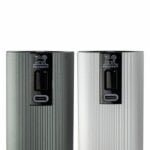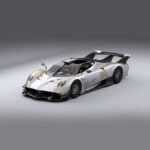The Rabla program was launched by the Romanian authorities with trumpets and trumpets. Unfortunately, in the long run, it seems to be very inefficient in curbing the appetite of Romanian drivers for second-hand.
An analysis published by PwC in the middle of this week tries to put in context the Rabla program and the financial incentives announced by the European Governments in order to encourage the transition to electric cars. In theory, in 2021, there was an explosion of interest in green cars in the top five European markets. In practice, there are several signs that that growth is impossible to sustain in the long run.
The market for electric cars, in question
In 2021, compared to 202, sales of electric cars increased by 72%, according to PwC. However, the value in question does not in any way translate into a decrease in the appetite for used cars.
“There is no doubt that the electric car market will continue to grow in the coming years, but the pace will be influenced by the level of incentives provided by European states, but also by a prolongation of the semiconductor crisis. The stimulus offered in the last two years has had the expected effect, with the number of registrations of internal combustion engines being significantly reduced in Europe. In Romania, the government recently announced the continuation of the Rabla and Rabla Plus programs and the increase of the amounts, but these measures are not enough to reduce the appetite for used cars and to fulfill the ambitions of the state to rejuvenate the national car park, one of the oldest in Europe. , appreciated the representative of PwC Romania.
If we look at Europe, the market share of internal combustion engines fell in the top five European markets to 58.2% last year, from 92% in 2019. In the UK alone, the percentage fell from 91% to 55%. %, while in Germany there was an increase from 92% to 58%. Norway remains a benchmark in the field. Only 8% last year represented the market share of internal combustion engines. In Sweden it was 49%, and in the Netherlands only 47%, for the first time below 50%.
In addition to reducing government incentives, another obstacle to maintaining the growth of electric vehicle sales is the fact that the pace at which charging stations are being set up in Europe is not fast enough to meet growing demand. To better understand the discrepancy between charging infrastructure and the number of electric cars, consider that charging points doubled between 2017 and 2020, and the number of electric cars has increased sevenfold at the same time.

 Renault’s compact family SUV will be called the Symbioz -.
Renault’s compact family SUV will be called the Symbioz -. Peugeot and its new range of salt and pepper mills -.
Peugeot and its new range of salt and pepper mills -. A new Uber Eats ad is being criticized for showing a peanut allergy -.
A new Uber Eats ad is being criticized for showing a peanut allergy -. Pagani announces new track-based hypercar, known as the Huayra R Evo -.
Pagani announces new track-based hypercar, known as the Huayra R Evo -. Introducing the Oscars in the Best Casting category -.
Introducing the Oscars in the Best Casting category -.